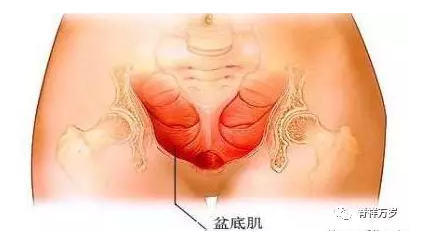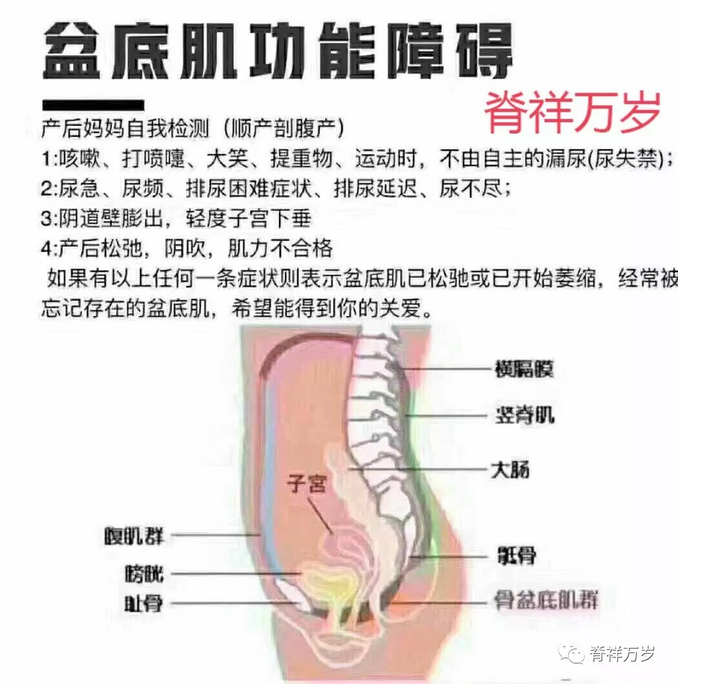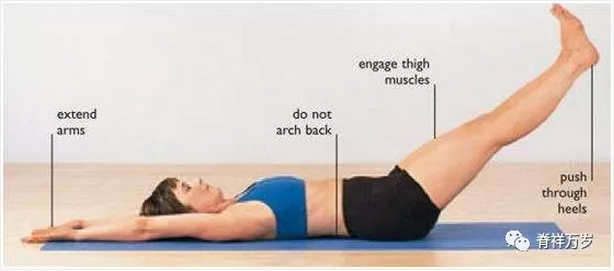
Service hotline:
13533607738
18602592233
Welcome to 广东脊祥万岁健康管理有限公司!
最新资讯
Pelvic floor muscle assessment, biofeedback training and electrical stimulation therapy have been popularized in developed countries and regions such as Europe, America, Japan and Korea.
Pelvic floor muscle training is routinely performed in women 42 days after delivery, which greatly reduces the occurrence of pelvic floor dysfunction such as pelvic organ prolapse and urinary incontinence. At the same time, wake up the nerves and muscles of pelvic floor, make vagina return to tightening state better, so as to improve the quality of sexual life, pleasure and orgasm.

Pelvic floor assessment and biofeedback training therapy are based on guided surface electromyography (ESEMG) and guided urethral systolic pressure (GUTP). Feedback is shown as EMG or pressure curve. Through influence display and sound prompt, patients can understand their pelvic floor muscle function more clearly and intuitively, and participate in the treatment. The combination of individualized electric stimulation therapy can awaken and activate pelvic floor muscles, accelerate the recovery of tension and elasticity of postpartum vagina and pelvic floor muscles, and have a good effect on the prevention and treatment of postpartum vaginal prolapse, relaxation, urinary incontinence and other pelvic floor disorders. Today we mainly look at pelvic floor rehabilitation training.

"Pelvic floor control" is not only pelvic floor assessment and biofeedback technology, obese women with stress urinary incontinence can reduce weight by 5% - 10%, the number of urinary incontinence will be reduced by more than 50%.
What is pelvic floor muscle training (PFMT)?
Answer: Also known as Kegel training method, it was originally invented to teach expectant mothers or pregnant women perinatal training in order to smooth production and postpartum rehabilitation. Later, it was found that this training method was very useful for diseases related to pelvic floor organ dysfunction, including urinary incontinence, defecation dysfunction, and various dysfunction and dissatisfaction related to female pelvic organs. You'll see.

Pelvic floor muscles are a group of muscles at the bottom of the pelvic floor, which support many organs, such as the uterus, bladder, small intestine, rectum, and so on. The contraction of pelvic floor muscles also maintains the normal function of these organs. Although the task of this group of muscles is very arduous, it is very fragile. Like obesity, pregnancy, fertility, surgery, cough, aging... They are killers of pelvic floor muscles. But we can train the pelvic floor muscles to gradually recover and strengthen, and fight against abdominal pressure.
Whether it is natural or caesarean section, women need pelvic floor rehabilitation after delivery. During pregnancy in October, the pelvic floor will become relaxed under the action of progesterone; as the fetus grows up slowly and the fetal position moves down, the pelvic floor will also be squeezed more and more, causing pelvic floor muscles to be damaged to varying degrees. After delivery, with the birth of the fetus, some ligaments are loosened, and the elasticity of the "spring bed" becomes worse. It is impossible to fix the organs in the normal position, resulting in dysfunction. Therefore, women with spontaneous and caesarean section need to do pelvic floor function assessment and pelvic floor function rehabilitation treatment after delivery.
Initial performance:
Vaginal relaxation
Sexual dissatisfaction
Feeling of abdominal distension
Frequent micturition
constipation
Moderate performance:
Urinary incontinence: Leakage of urine when coughing, sneezing, laughing or weighing
Pelvic organ prolapse (uterus, bladder, rectum, etc.); vagina from falling feeling, vaginal distension discomfort, accompanied by abdominal distension pain, back pain;
Severe manifestations:
Urinary incontinence: Urinary incontinence occurs when standing up
Pelvic organs come out of the vagina, often rubbed when walking, causing ulcers, suppuration or uterine hypertrophy and other problems.
Chronic pelvic pain, sexual dysfunction and other diseases
Rehabilitation training of pelvic floor muscles
Female pelvic floor muscles are severely damaged during childbirth, so almost all women need to do pelvic floor muscle rehabilitation training after childbirth. So how to carry out pelvic floor muscle rehabilitation training? Today I will introduce the pelvic floor muscle rehabilitation training methods.
Under the guidance of doctors or professional therapists, pregnant women and lying-in women can practice some targeted movements to open the pelvis and facilitate smooth delivery; enhance muscle tension and balance of the body, improve the flexibility and flexibility of the whole muscle tissue; stimulate hormone secretion glands, increase blood circulation, eliminate physical discomfort, is also a very good pelvic floor muscle. Meat rehabilitation training.
But pregnant women should pay attention to the movement process should not appear bending, breath holding, abdominal pressure and other movements, otherwise easy to harm the fetus.





Basic Principles of Postpartum Pelvic Floor Muscle Rehabilitation
The main goals and basic principles of postpartum pelvic floor muscle rehabilitation are to improve pelvic floor muscle contractility, prevent and treat PFD, and improve the quality of sexual life. In 1940, Dr. Arnold Kegal proposed Kegal training to strengthen pelvic floor muscles and reduce the incidence of urinary incontinence. On this basis, combined with biofeedback technology, electrical stimulation technology, greatly improve the effect of pelvic floor rehabilitation treatment.
Pelvic floor muscle exercise method Pelvic floor muscle exercise (PFME), also known as Kegal exercise.